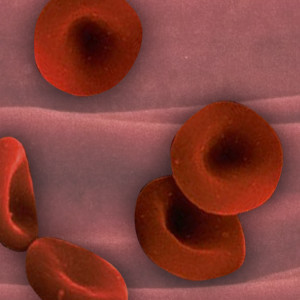Patients undergoing chemotherapy for cancer can often become anaemic as their red blood cell counts, and hence iron levels, fall. Besides the traditional approach of offering blood transfusion in order to restore iron levels, physicians can now treat patients with drugs that stimulate red blood cell development – known as erythropoiesis-stimulating agents (ESAs). Both treatments can boost iron-containing haemoglobin (Hb) levels, but they also pose risks to the patients. With transfusions, patients are at risk from serious infections and immune-mediated adverse events, while with ESAs; there is an increased risk of thromboembolism and death from other (but poorly understood) causes [1].
Updated guideline on the use of epoetin and darbepoetin in cancer patients
Home/Guidelines
|
Posted 17/05/2013
 0
Post your comment
0
Post your comment

In order to assist with treatment decision making, in 2010 the American Society of Clinical Oncology (ASCO) and the American Society of Hematology (ASH) updated their guideline on ‘Clinical Practice Guideline on the Use of Epoetin and Darbepoetin in Adult Patients with Cancer.’
In producing the update, ASCO and ASH performed an extensive review of literature published since the previous update in 2007, particularly in relation to the risks associated with ESAs. The highlights of the new guideline update include the following:
- Confirmation that ESA therapy is associated with a shorter survival and increased risk of tumour progression and recurrence, as well as thromboembolism. The 2010 guideline update therefore recommends that ESA be used sparingly to treat only those patients whose Hb levels have fallen below 10 g/dL, in order to decrease the need for transfusions.
- Physicians should check first for alternative causes of anaemia besides chemotherapy before ESA treatment commences.
- Physicians should discuss with patients the risks and benefits of ESAs compared to the potential harms and benefits of transfusion, as well as their treatment goals, i.e. cure versus palliation (prevention of suffering), before embarking on treatment.
- Owing to the potential harms, the 2010 update sides with FDA labels indicating ESA treatment for palliation purposes, but does not rule out ESA treatment for patients receiving curative chemotherapy, given that the available evidence does not distinguish between subgroups receiving chemotherapy for the purpose of cure versus palliation. The update states, ‘Clinicians are urged to exercise caution in considering ESA use in patients with malignancy being treated with curative intent.’
- Epoetin and darbepoetin are equivalent in efficacy and safety.
- Clinicians should carefully weigh the risk of thromboembolism in patients when prescribing ESAs.
The 2010 update is available, together with a patient guide and other clinical tools and resources at www.asco.org/guidelines/esa and www.hematology.org/guidelines/esa.
The dose of ESA can be modified, or discontinued, depending on whether treatment reduces the need for transfusions and increases Hb levels within 6 to 8 weeks.
ESA treatment should only be continued until Hb levels reach ‘the lowest concentration needed to avoid transfusions’, which may vary from patient to patient, owing to the increased risk of death.
ESAs should only be given to patients receiving chemotherapy, and withheld once patients complete their chemotherapy course.
The 2010 update concludes with a call for further research to understand the mechanisms of harm, and to identify more precisely which patients are least likely to experience these. The authors add, ‘This understanding is paramount to the ability of clinicians to extend the benefit of these drugs while reducing the risks.’
Related articles
Approval of biosimilar epoetins: how similar are they?
Biosimilar epoetins: how similar are they?
Reference
1. Clayton J. Update on clinical practice guideline on the use of epoetin and darbepoetin in adult patients with cancer. Generics and Biosimilars Initiative Journal (GaBI Journal). 2013;2(2):97-8. doi:10.5639/gabij.2013.0202.018
Permission granted to reproduce for personal and educational use only. All other reproduction, copy or reprinting of all or part of any ‘Content’ found on this website is strictly prohibited without the prior consent of the publisher. Contact the publisher to obtain permission before redistributing.
Source: ASCO, ASH
Policies & Legislation
Argentina streamlines drug approval process
ANVISA tackles 24-month backlog in biologicals post-registration petitions
Most viewed articles
The best selling biotechnology drugs of 2008: the next biosimilars targets
Global biosimilars guideline development – EGA’s perspective
New guidance for biologicals in Pakistan and Hong Kong’s independent drug regulatory authority

Home/Guidelines Posted 20/10/2025
Canada poised to remove requirement for Phase III trials for biosimilars

Home/Guidelines Posted 22/07/2025
The best selling biotechnology drugs of 2008: the next biosimilars targets








Post your comment